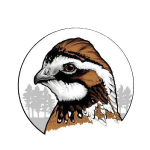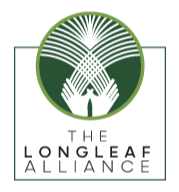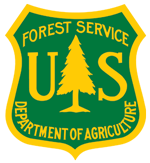Landscape Partnership Resources Library
US Fish and Wildlife Service - Science Seminar Series 2012
US Fish and Wildlife Service Science Seminar Series 2012 takes place in the Northeast Regional Office, Hadley, MA, on the second or fourth Thursday of each mouth from 12:00 noon - 1:00 p.m. Presentations are also available via broadcast or webinar at http://www.fws.gov/northeast/science/seminars/
App LCC Synthesis Report 12711 DJ Case ver3 FINAL Nov 2011
App LCC Synthesis Report 12711 DJ Case ver3 FINAL
Rob Baldwin Landscape Scale Conservation Planning Talk Nov 2011
Rob Baldwin Landscape Scale Conservation Planning Talk Nov 2011
Ken Elowe Conservation Framework Presentation AppLCC Workshop Nov 2011
Ken Elowe Conservation Framework Presentation AppLCC Workshop Nov 2011
Paul Johansen Welcome ALCC Conservation Priorities Science Needs Workshop Nov 2011
Paul Johansen Welcome ALCC Conservation Priorities Science Needs Workshop Nov 2011
IT Notes 2011
Goal statement: Create, maintain, and grow a GIS/ IT architecture that facilitates the development of community networks, supports systems modeling, enables information creation, exchange and education in a consistent manner across administrative boundaries allowing users to easily discover, access and integrate data and tools to facilitate conservation across the landscape over time.
RFA 6 - Understanding Land Use and Climate Change in the Appalachian Landscape - Word Doc
The APLCC intends to understand and address major environmental and human-related vulnerabilities of species as it relates to climate change stressors and develop adaptation strategies in response to climate change. This project will identify species and habitats vulnerable to climate change impacts, and describe vulnerabilities in sufficient detail to inform conservation partners who can then plan adaptive management responses, and compile a tabular, geo-referenced database for the Appalachian LCC website with a list of species/communities by taxonomic group/province identified as most vulnerable using the methodology determined to be of highest quality and best suited to the need of the Appalachians.
RFA 5 - Survey inventory & distribution mapping of RTEE species across the Appalachian LCC
Species/community management at the large regional scale of the Appalachian LCC requires GIS products that allow for a comprehensive assessment of distribution trends at whole-population levels. Those species that are federally listed under the Endangered Species Act are most likely to have been mapped across their entire range of occurrence, however state-listed species or other rare but priority species may not have been mapped entirely - or this information may not be readily available to all LCC partners. Having georeferenced ranges for our rarest endemic species will allow resource managers to focus conservation efforts, including mitigation projects and seek to divert development interests harmful to these communities. Furthermore, readily accessible comprehensive data will result in enhanced collaboration opportunities.
RFA 4- Landscape-scale maps of terrestrial habitat and ecosystems based on a common mid-level classification framework for the Appalachian LCC region - Word Doc
Most past and current efforts to predict the geographic distribution of current or potential vegetated communities occur at national and regional scales (e.g., LANDFIRE, Gap Analysis Program, Northeast Terrestrial Habitat Mapping Project) and utilize a combination of remotely sensed imagery and mapped environmental and ecological variables. The resulting products, while comprehensive in coverage of the region, are often at a resolution too coarse or a precision too inaccurate to be utilized at the scale of on-the-ground habitat conservation delivery. Land managers and conservation planners need standardized, consistent, and accurate landscape-scale maps of terrestrial habitat and ecosystems based on a common mid-level classification framework. Managers also need mapping products with units developed at a resolution necessary to take into account or respond predictably to successional dynamics and disturbance regimes. Furthermore, mapping products which additionally identify habitat structural characteristics (e.g., canopy cover, layer stratification) are critical to better understanding habitat condition and determining suitability for specific species.
RFA 3 - Forecast future spatial footprint of energy production across the Appalachian LCC region - Word Doc
Without a predictive visualization of energy development, the Appalachian LCC cannot make informed decisions on landscape conservation priorities. This project will provide an overview of principal stressors created by energy development, by sector and cumulatively across the Appalachian LCC. The products to be developed will include forecasting model(s), and Geographic Information System (GIS) products to provide a projection of the energy development footprint across the Appalachians LCC by individual sector and cumulative footprint. Deliverables will inform resource management decisions by providing a foundational reference for predicting potential future development as a spatial footprint that can be overlaid with Appalachian LCC targets and priorities.
RFA 2 - Development of a stream classification system compatible throughout the Appalachian LCC as a platform to study ecological flow issues - Word Doc
In order to support development of instream flow standards, a classification system for Appalachian aquatic ecosystems is needed. A regional river classification system would allow states and other water resource managers to supplement their own limited data for flow-ecology relationships with information from other areas. Several stream habitat classification efforts have been developed (or are under development) in areas partially overlapping the Appalachian LCC, but these are somewhat different from each other, do not cover the entire Appalachian LCC geographic area, and may or may not meet the needs of resource managers in the Appalachians.
RFA 1 - Inventory and review of ecological flow models and monitoring networks with applicability to Appalachian watersheds - Word Doc
Flow models offer a methodology to predict instream flow using a variety of parameters, and are the best tool available to assist resource managers in making scientifically defensible recommendations and setting sound water resource policy.


























